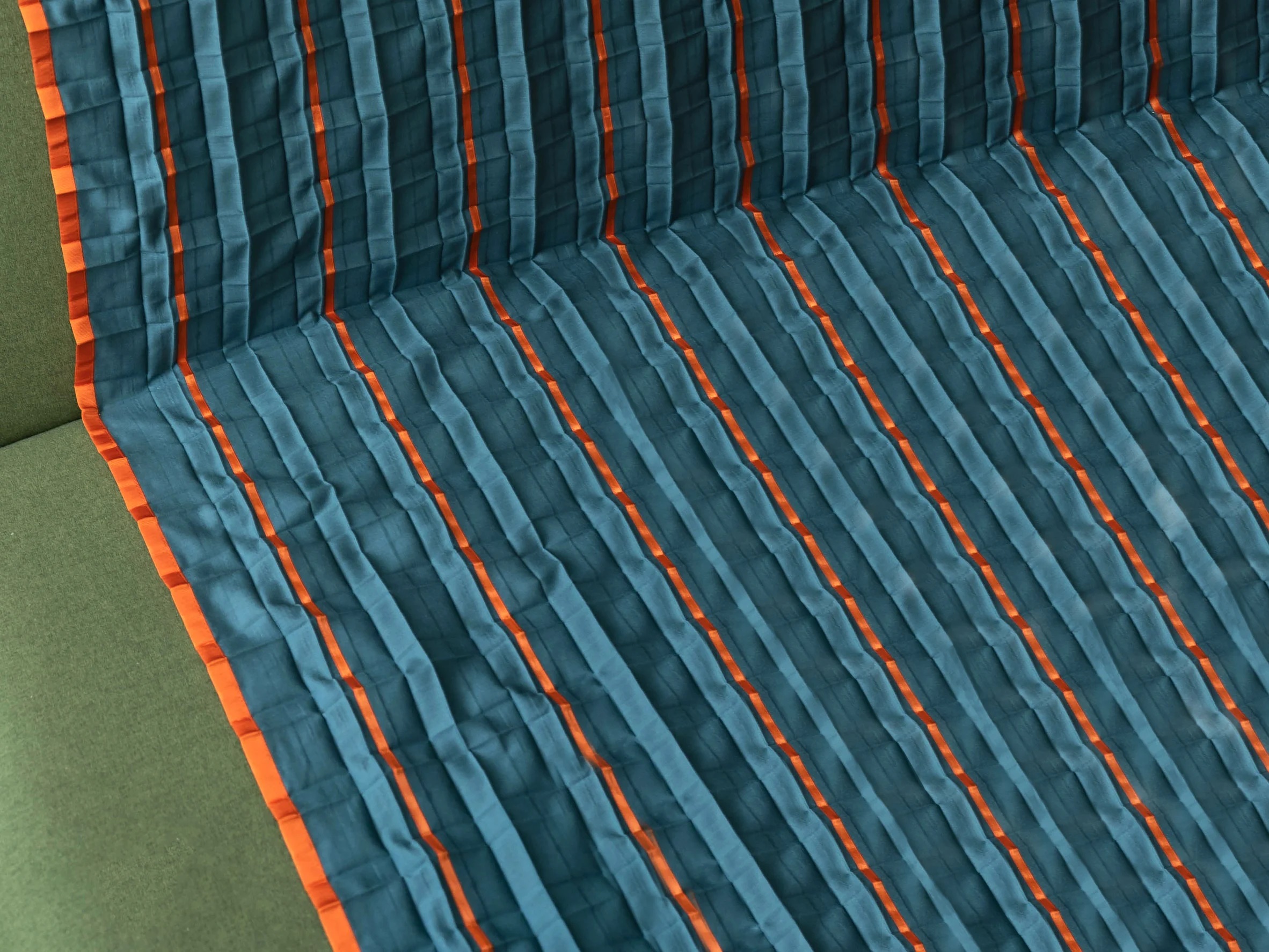Perhaps next winter will be different from the others. It will be quite cold, for various reasons. Many people will find it difficult to get warm. It is expected to be a winter of rationing, of pushing energy conservation, of reducing available energy. Many will explore ways and practices to transform everyday products. Making them more accessible and affordable, for example, including through renewable energy. Mireille Steinhage has created, from this perspective, the Solar Blanket.
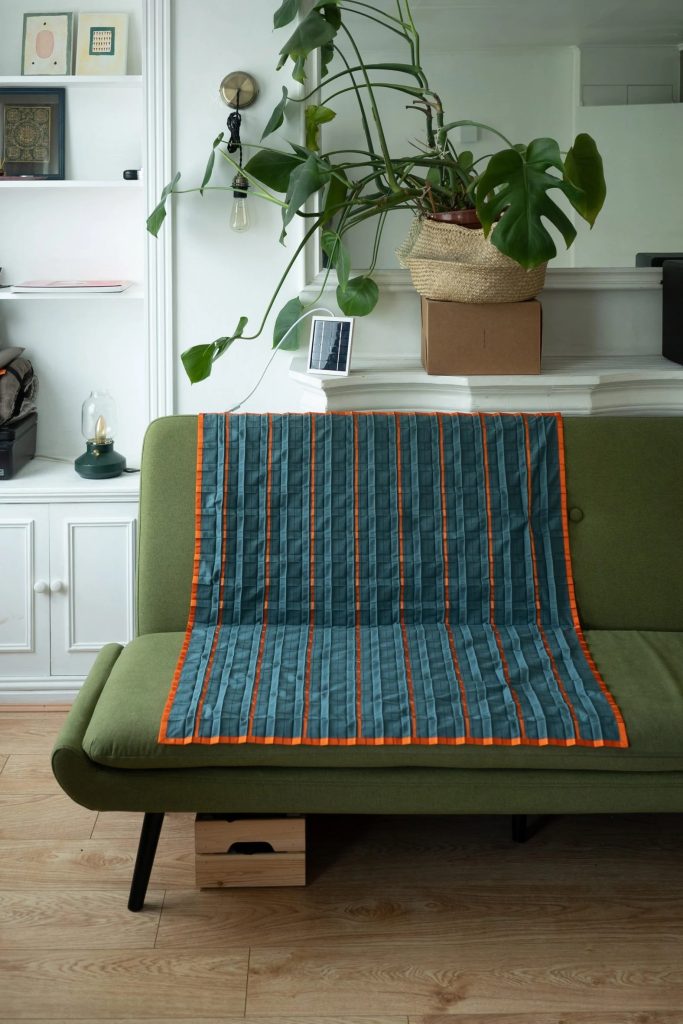
Economical and sustainable design
Inventing an economical and sustainable design is not a mission impossible. On the contrary, there are many virtuous examples. The goal is to bring renewable energy to those who need it most. Those who are not familiar with it. Those who consider it a privilege for the few.
Mireille Steinhage thus invented a “cheap and sustainable” solar thermal blanket. Made from conductive yarn. The “Solar Blanket” is really a solar-powered thermal blanket. It can be wrapped around a person or stretched over an armchair to warm those sitting on it.
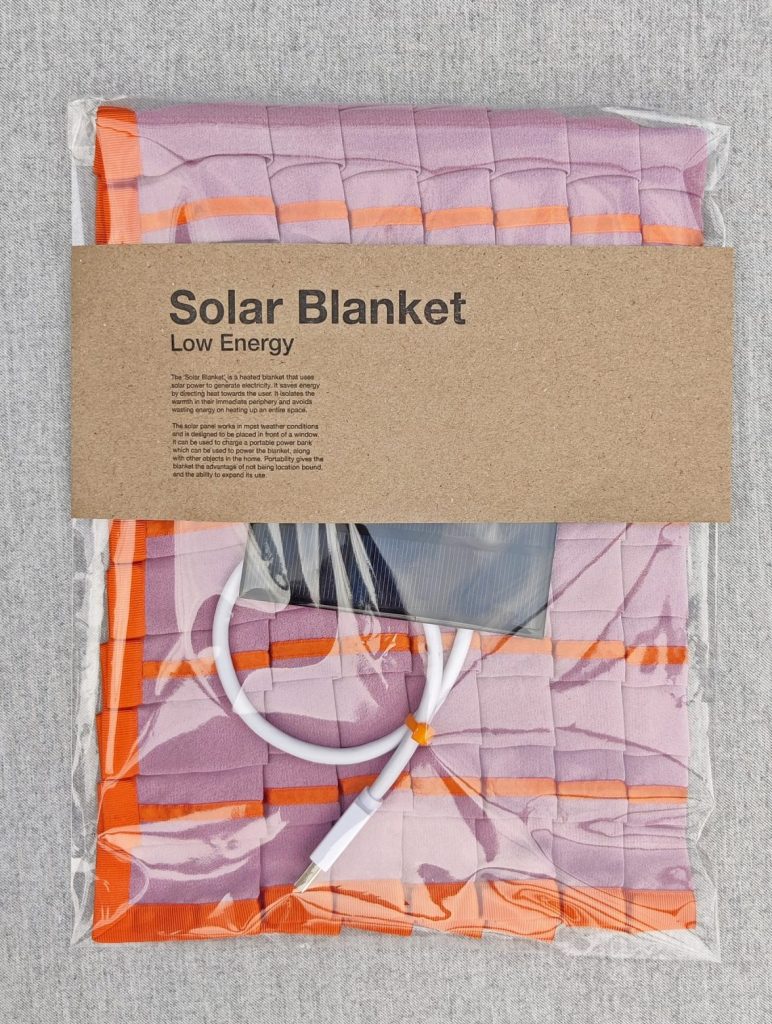
The Solar Blanket
The Solar Blanket comes with a solar panel, designed to be placed in a window. The panel allows a portable battery to be charged. Once charged, the battery can be connected to the blanket or other similar products. The thermal blanket has threads of conductive yarn running through it for heating.
The graduate of the Master of Material Futures program at Central Saint Martins in London, Mireille Steinhage, developed the Solar Blanket as part of her own project. The project explores ways to make products that use renewable energy more accessible and affordable. The project has a meaningful name: People Power.
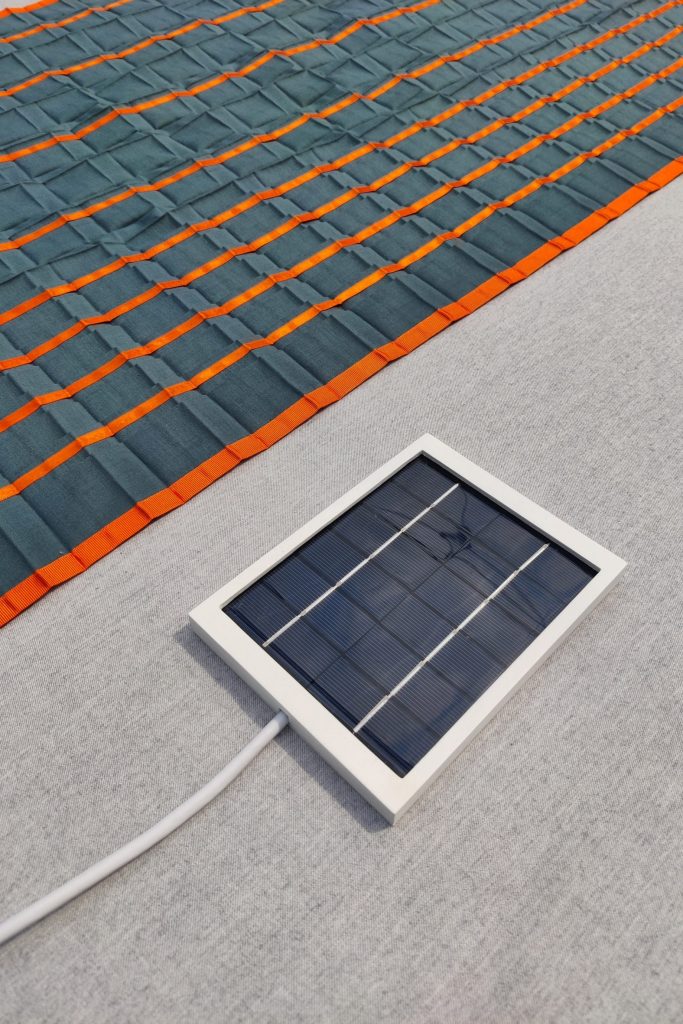
People Power
The young designer started working on People Power in 2020, before the announced energy crises. And she immediately identified the heated blanket as one of the products that could make a big difference for people if it was made from renewable energy.
Placing emphasis on personal responsibility when it comes to sustainability is very important. However, it is not so simple. For the 14.5 million people living in relative poverty, in the UK, it is often not a practical choice. The Solar Blanket should be accessible to everyone
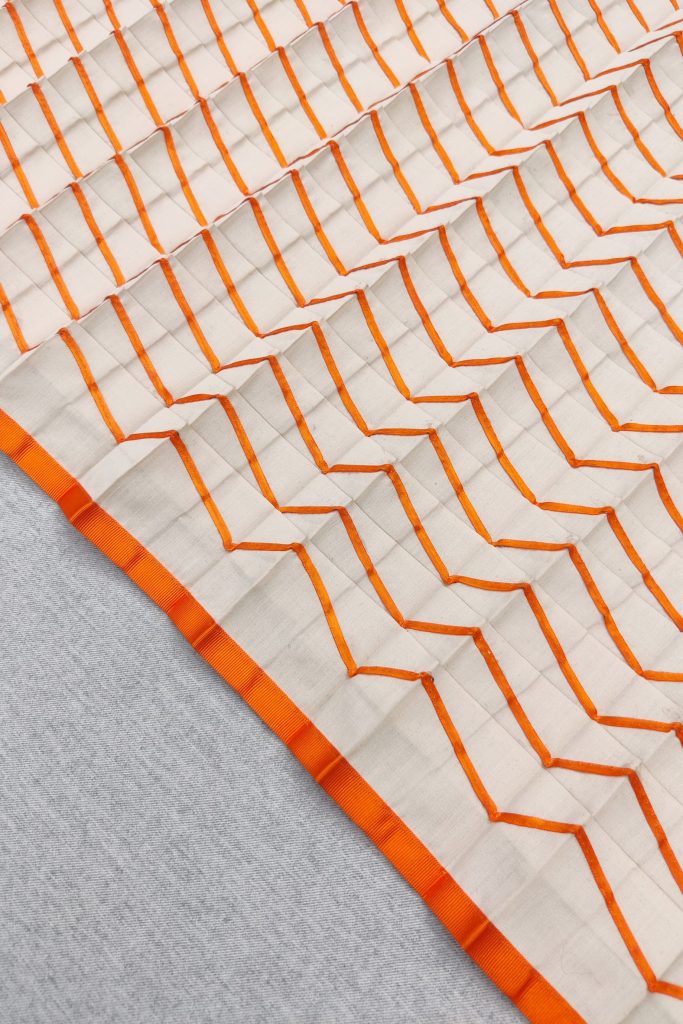
According to Mireille Steinhage: “Placing emphasis on personal responsibility when it comes to sustainability is very important. However, it is not that simple. For the 14.5 million people living in relative poverty, in the UK, it is often not a viable option.”
He adds, “These people may not be able to act so that sustainability can become their personal priority. Even if they wanted to. If we want to achieve a more sustainable future, being sustainable should be accessible to everyone.”
A more sustainable future
The 12-volt Solar Blanket heats at about 30 degrees Celsius and runs for two hours on a full charge. The enclosed solar panel works in most weather conditions. And also, can be used for other devices.
Mireille Steinhage estimates that the “Solar Blanket” could retail for less than twelve euros. A fine example of democratization and dissemination of renewable energy products. But also, an impetus toward the design of renewable and multi-use ideas.
Mireille Steinhage portfolio
You may also be interested in: Plastic, cotton, or paper?


